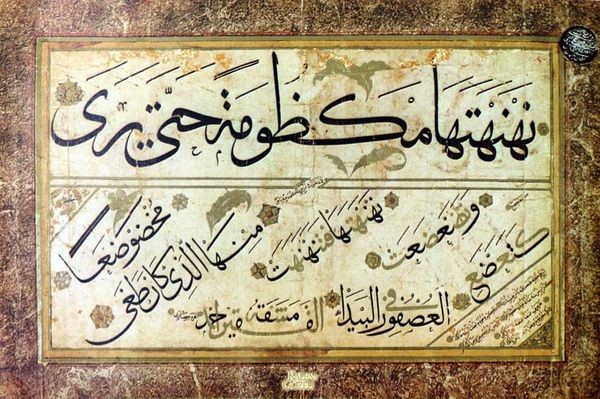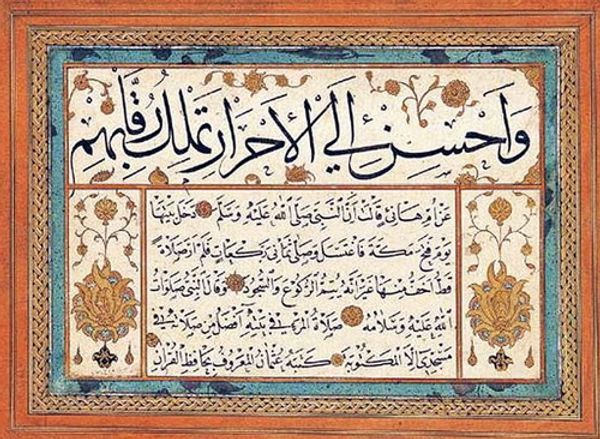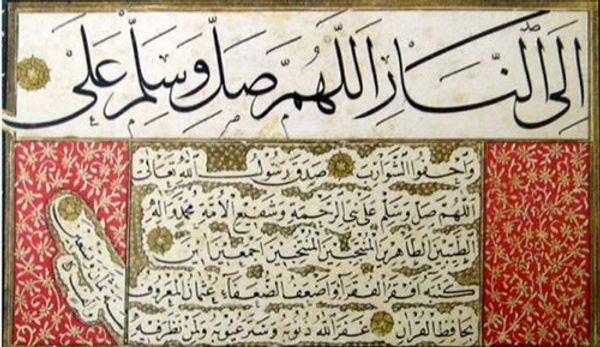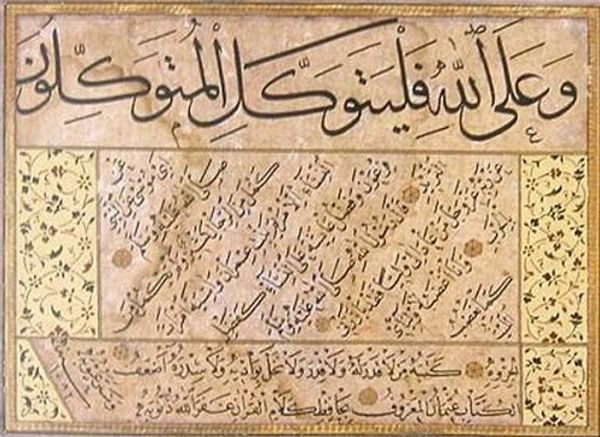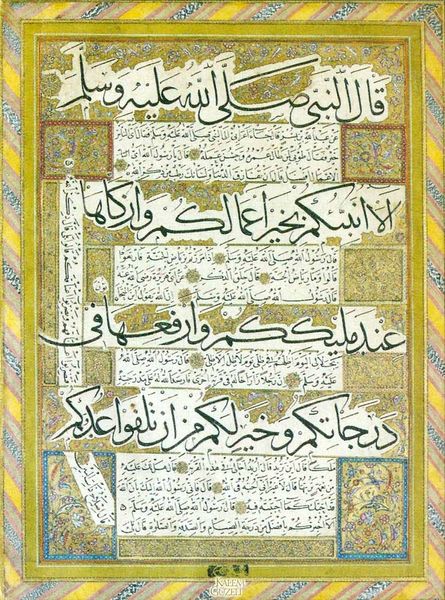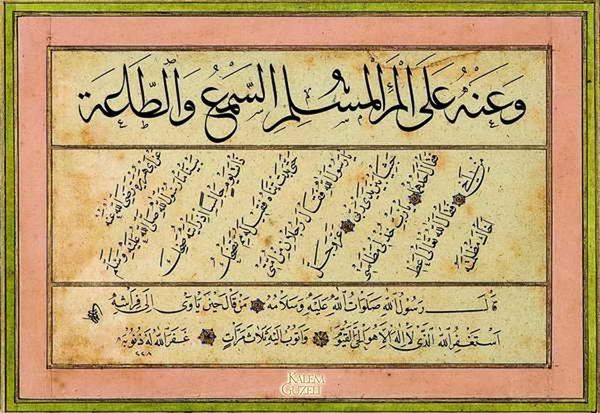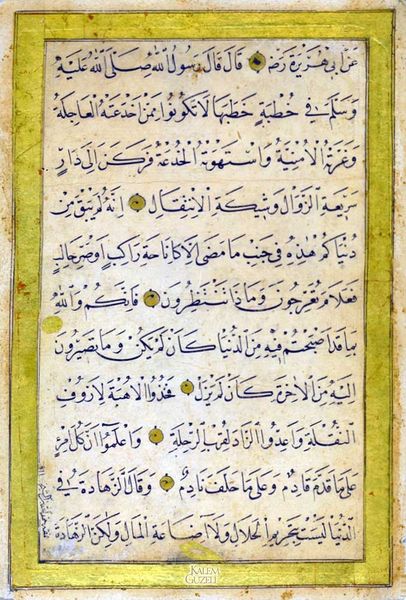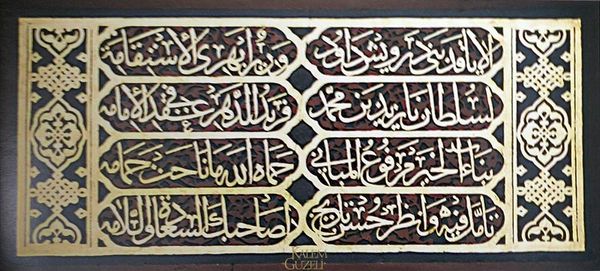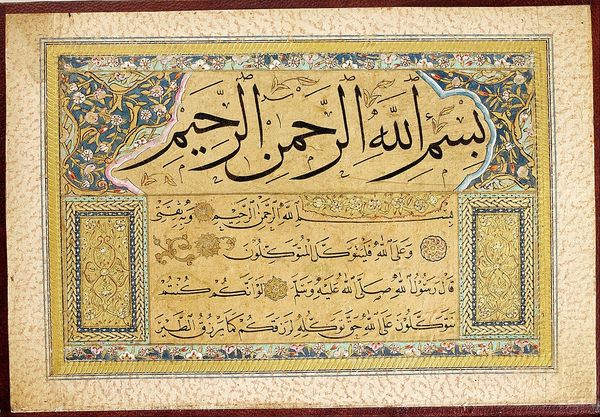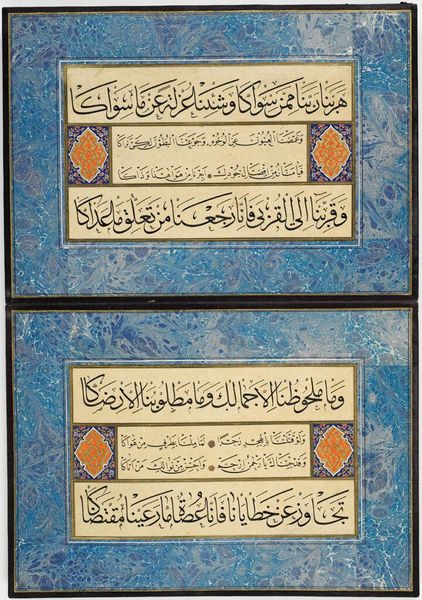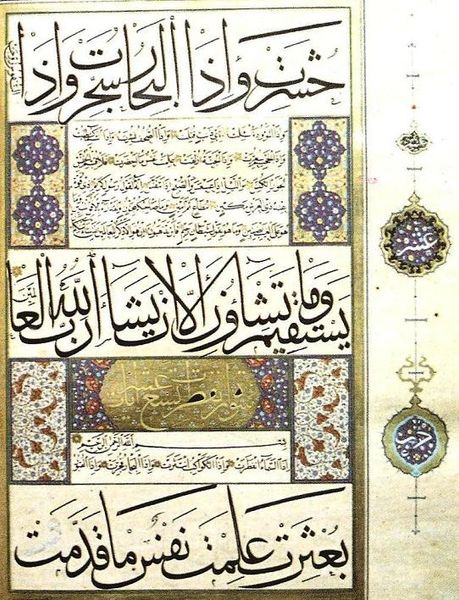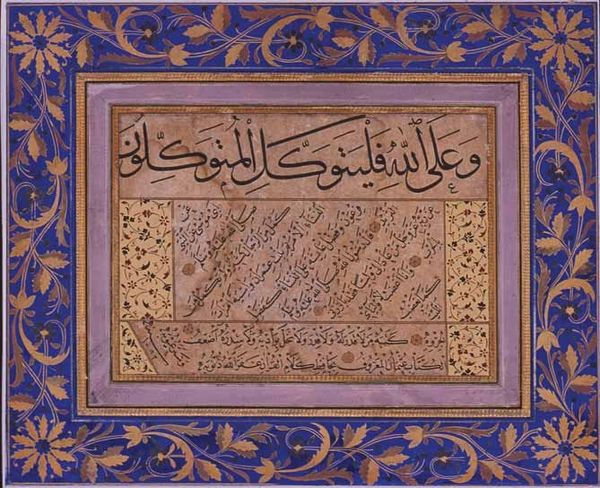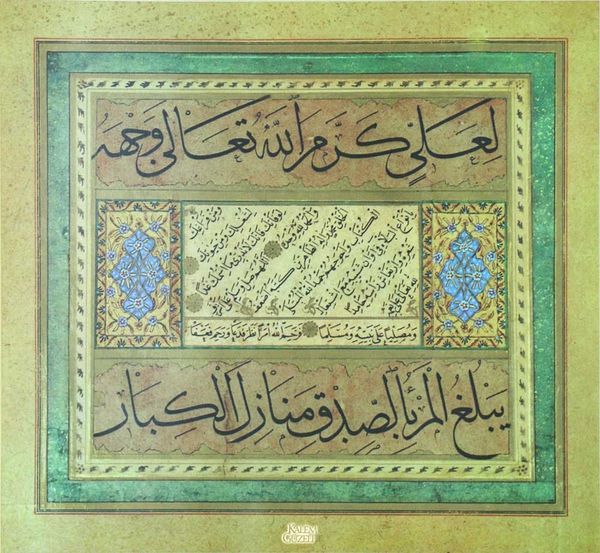
textile, paper, ink
#
textile
#
paper
#
ink
#
islamic-art
#
decorative-art
#
miniature
#
calligraphy
Copyright: Public domain
Editor: We’re looking at “Kita - Hadis-i Şerif,” by Mustafa Rakım. It appears to be ink on paper and textile, presented as decorative art with Islamic calligraphy, almost miniature in scale. I’m immediately drawn to the elegant, flowing lines. What stands out to you when you look at it? Curator: This piece invites us to consider the public function of art in Islamic societies. Calligraphy isn't simply writing; it's a deeply respected art form intertwined with religious and cultural life. Notice how the artist uses bold strokes and delicate embellishments to convey not just information but also reverence. What do you think the use of textile adds to this artwork? Editor: That’s interesting… Perhaps the textile is used as a signifier for greater social display? Unlike paper alone, its integration creates a framed work ready to be hung in the house and openly signal one's adherence to Islam. Would you agree with such interpretation? Curator: Exactly! Its public display makes us reflect on how Islamic faith and practices have influenced aesthetics. We must acknowledge how art creates powerful messages. Who gets to interpret those messages becomes incredibly significant within sociopolitical contexts. Is it a sign of devotion, status, or perhaps something else entirely? Editor: That reframing really shifts my perspective. I initially focused on the purely aesthetic qualities, but you've shown how intertwined art is with social and cultural statements. I will certainly approach it from that angle now! Curator: And hopefully, this will invite the public to delve further into those questions, too. Art becomes meaningful when you interrogate these intersections and uncover complex dialogues that go beyond the purely aesthetic or religious values of the artworks on display.
Comments
No comments
Be the first to comment and join the conversation on the ultimate creative platform.
